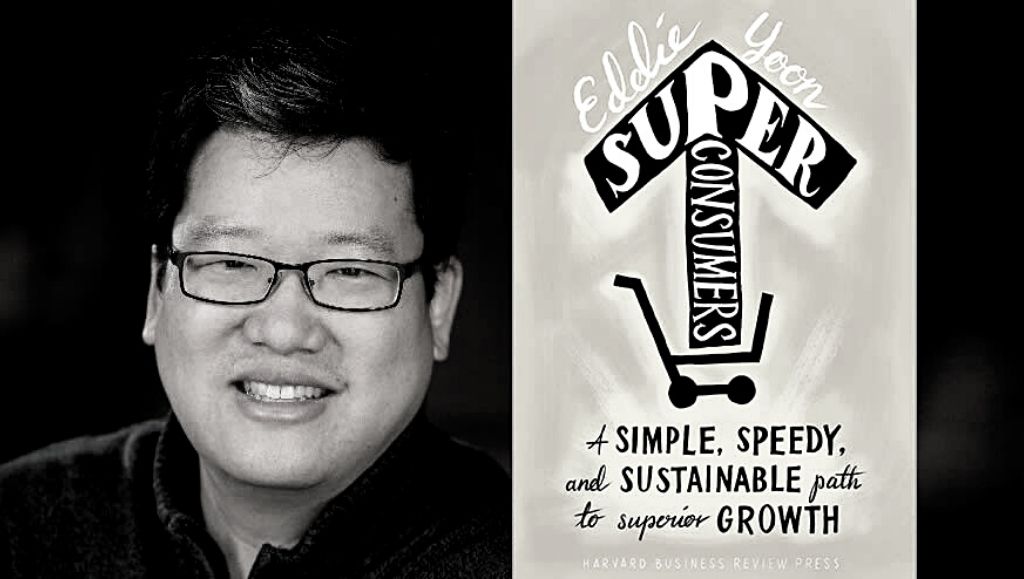Last year, I made a post on LinkedIn about how LinkedIn is like the elephant in the story of the six blind. And although it’s different for different people based on their experience with it, LinkedIn for growth is a common theme that strings everyone who use it intelligently. From its genesis as a social media platform for business professionals, LinkedIn has come a long way to become a Swiss Army Knife for all professionals and their sundry needs.
Marketing and sales professionals perhaps have the best advantage out of LinkedIn because of the way the platform works in their favor. Marketing through Google is critical, but its ad bidding system and race around ranking make it a tough nut to crack. Facebook ads have high reach, high potential. However, it’s kind of pointless for B2B marketing needs. Nurturing leads through other acquisition channels such as emails, webinars, affiliate marketing, referral marketing, etc. is mostly a grunt work because it takes a lot of time and hard work to sift qualified leads from the amount of traffic they get through these acquisition channels.
LinkedIn, in contrast, has been a high signal platform from the beginning. Its hyper-personal reach is unmatched by any other platform. I mean, what other platform allows you to target by professional title, geography, seniority level, and even company name? It is also a humongous social media market. Out of LinkedIn’s 580+ million users, 303 million are monthly active users (MAUs). Of that, 40% are daily active users (DAUs) — a majority of who are specialized business professionals from across the world.
A 2018 report shows that 97% of B2B marketers banked on LinkedIn to distribute their content to their target audience. Other research findings vary, but they all agree that LinkedIn trumps Facebook, Twitter, and other social media platforms when it comes to generating the most number of quality leads for B2B companies.
Taking this trend into consideration, today we are either witnessing LinkedIn at its peak or the best is yet to come. Either ways, marketing and sales teams have every reason to exploit LinkedIn for growth: to acquire new customers, engage with them, and build strong relationships that can convert into meaningful business.
Sounds good, but will this break my bank?
Not really. LinkedIn is great for both — teams that don’t have money to splurge and the ones that have. Paying to leverage LinkedIn to grow your sales and marketing is a reliable option, but that doesn’t mean it’s the only way to do so. Spending on LinkedIn for growth has some advantages which we will discuss in the next section. But let’s unpack its free components first.
Most of what LinkedIn offers to its users is free, given you are ready to spend your most valuable resource on it, i.e., time. Therefore, even if you are part of a startup with a shoestring marketing budget — don’t worry. You can still milk LinkedIn for growth without any money.
Personally, I think LinkedIn’s easy-to-crack organic reach is one of the best LinkedIn freebies’ we all can make use of. Until 2018, I used to be a passive LinkedIn user because my attention was diversified across other online and social media channels — both personally and professionally. That changed, when I started fiddling with LinkedIn in the third quarter of 2019. Within just 3–4 months of being moderately active on LinkedIn, I doubled my number of connections, built genuine relationships, and met a handful of people in real-life whom I first connected with through LinkedIn.
LinkedIn for growth: A case study in $20 organic marketing
In November 2018, my friend Yaagneshwaran (popularly known as Yaag) and I decided to run an experiment on LinkedIn. Back then we were colleagues and our day usually started with us meeting at the office cafeteria to discuss a plethora of topics ranging from books to productivity hacks, parenting to entrepreneurship, and writing to marketing. We held contradictory viewpoints on most of these topics, although we were principally aligned by a mutual drive to become better marketers. On a particular Monday morning, we went through a lot of back and forth on the topic of how some books are actionable while others are filled with just a bunch of abstract concepts. Desperate to reach a conclusion on who had a better argument, we decided to throw the topic out in social and let the jury decide for us. So we recorded a painfully long 8-minute-video broadcasting our offline coffee conversation to the LinkedIn audience.
What started as an impulsive recording that day has now become a fun side project for Yaag and I for a little over a year now. We have not monetarily profited from it yet — and frankly, that’s not been our focus so far — but we also haven’t spent anything on it. We did spend about $10 each to buy a pair of mic to make ourselves more audible on the video, and that’s it. We use our mobile phones to record impromptu videos, so there is no need for a post-production budget. Beyond that, we have never spent a penny on producing #CoffeeConversations.
The intangible benefits it has created for us is inexplicable. After formalizing it as a marketing-led video series under the #CoffeeConversations hashtag, we started getting a lot of attention from like-minded marketers across the globe. Apart from the usual job offers and consulting proposals, people and businesses have reached out to us for book deals, invitation to speak at events, and a few meaningful real-life collaboration. Among all the other outcomes, we are most satisfied with recently being offered a venue sponsorship from a leading e-commerce company.
We didn’t shelve thankfully…
We did consider shelving the project when we parted ways to work for different companies, but the interest from people who watched us from close quarters motivated us to keep doing it. The experience we gained from recording #CoffeeConversations for almost every week since the last one year also gave us the confidence to start a podcast, which is an extension of the LinkedIn video series in a long-form audio format. You can find more about our newly-launched podcast here.


The personal lessons I have learned from this accidental experiment is that if you roll up your sleeves and double your output on LinkedIn, you will see significant progress in your personal branding and networking sphere. It’s also learning that I share with other people in my network who have achieved similar results. You don’t necessarily need money; all you need is time, energy, and a plan to reach out to your audience.
This formula of personal or employee branding is also useful for brands who want to use LinkedIn as part of their account-based marketing (ABM) strategy. For example, you can launch an influencer marketing campaign to nurture your target accounts, given that you have done your research of who your audience is, how engaged they are on LinkedIn, and what their content preferences are. If you are taken aback by the mention of the word influencer marketing, rest assured — it’s not the same kind you are thinking about.
Let’s understand this with an example that I have watched from a close distance. A company that I worked for in the past was/is in the IT service management business. They drafted a LinkedIn-based ABM plan that looked like this:
- Gather insights on the key accounts (e.g., potential deal size, decision-makers, etc.)
- Identify internal influencers to as campaign influencers
- Groom them on pitching, messaging, and positioning the product
- Launch a targeted campaign to amplify their personal brands
- Create/Distribute content to established them as subject matter experts
- Engage with relevant accounts
- Start the buying cycles
The influencers in the above example were marketing and sales folks who were aligned in their core mission to influence certain accounts. Though unconventional, helping them build their personal brand is important because people trust people more than they trust brands. And just to be sure, when employees build their personal brands online, they personify your business.
Once the influencers achieved a decent level of organic engagement, they leveraged their influence to build relationships with these accounts and took the conversation to other high-touch channels such as email, in-person meetings, and bespoke product demos.
It’s astounding to realize that you can do all this with LinkedIn without borrowing your penny from your marketing budget. And the benefits of building this framework are long-term; not only will you be able to go after the accounts you targeted from the beginning, but you can also build a database of other clients that are organically drawn to you during this campaign period. You can use that information to develop an ABM strategy plan to woo them individually.
Can I bankroll my success on LinkedIn?
Of course, you can. I am sure that is exactly what LinkedIn expects from us. But just like in life, throwing money at LinkedIn won’t automatically solve your problems.
By building a platform that caters to all business demographics, team LinkedIn has realized the opportunity they have created and they have been aggressively monetized the platform through their own products such as LinkedIn for Business, LinkedIn Marketing Solutions, Sales Solution, Talent Solutions, and LinkedIn Learning.
Among these, you can use LinkedIn’s sales and marketing solutions to amplify your business growth. For instance, you can buy different types of LinkedIn ads to run your marketing campaigns. Here are each of the ad formats and how can you use them:
Text Ads
Text Ads are the oldest forms of LinkedIn ads that you can launch only to the desktop audience. The good thing about LinkedIn’s Text Ads is that they are the cheapest ad formats when it comes to cost per click (CPC) value. The bad news is, because they appear on the right rail of your audience’s LinkedIn feed, they don’t really drive engagement because they stand out as obvious ads. Experiment with Text Ads as your training wheels to ease into the world of LinkedIn ads or if you are not sure about their impact on your business.
An example of LinkedIn’s Text Ads
Sponsored Content
In my opinion, Sponsored Content is the best ads LinkedIn offers because they are native, they appear seamlessly in your audience’s feed, and are available in both desktop and mobile platforms. The chances of customer engagement on Sponsored Content is higher because it blends natively into their feed and lies in the direct line of sight of your audience.
An example of LinkedIn’s Sponsored Content, presented in a carousel format.
Sponsored InMail
These ads, recently rebranded as Message Ads, are basically LinkedIn’s version of email marketing or ads we get through direct messaging. Just like in emails, there is no guarantee that your target audience will open a Sponsored InMail, read it, or click on any link you might have provided in it. In my experience, these direct-to-inbox ads have a near-guarantee open rate. It’s certainly more effective than sending emails that have a high threshold for click rates. Sponsored InMails offer just one CTA, making clicks binary for customers.
But Message ads operate differently than other forms of CPC or CPM ads because they are priced between 35¢ to 85¢ per message sent. Sponsored InMails are great for personalized ads such as invitations to download industry reports, webinars, events, beta testing, and so on. It’s very important to keep your Sponsored InMail specific to a narrow set of audience — possibly, to people who you know are already engaged with your brand — because although they are priced in cents, they will cost you dearly if you generalize your target audience.
LinkedIn’s Sponsored InMail is great for sending personalized ads, like the one shown here.
Dynamic Ads
If you have come across ads on the right panel of your LinkedIn feed that pairs your picture with a brand logo, you have seen LinkedIn’s Dynamic Ads in action. It’s a clever bid to personalize ads to the users, but it’s not an effective strategy because — just like the Text Ads — people can easily tune them out as ads. Also, just like the Text Ads, they are good only for driving desktop traffic. You can’t run Dynamic Ads on LinkedIn’s mobile app or browser.
Dynamic ads pull your LinkedIn profile picture and pair it with the ad sponsor
LinkedIn is also promoting other forms of advertising, such as Video Ads and Carousel Ads, although they are very expensive and not very effective at this point. My recommendation is — if you want to test the waters with LinkedIn ads and you want an affordable option, go with Text Ads. If you want more reach and more engagement, go with Sponsored Content.
Having said that, keep in mind that LinkedIn is not a great platform to run ads for your top funnel content (e.g., blog promotion) because of its high cost per lead ratio. At $6–$9 per click, the dollar value of LinkedIn ads is way higher than what you might spend on Google, Facebook, Twitter, or Instagram. This is the case because LinkedIn is the biggest social media player in the B2B domain. Businesses across the B2B landscape are okay to pay a premium price for the quality of leads they can generate via LinkedIn ads. If you want to make the most out of your LinkedIn ad spend, incentivise your ads with offers that are closer to the middle or even bottom funnel conversions.
If LinkedIn ads are so expensive, how are they even worth it?
Good question. And this is my favorite thing about LinkedIn — it’s targeting is amazingly accurate when compared with other platforms. You can pick and choose from to fit your marketing context, ranging from driving more sign ups to your websites to attracting the right candidates to your job posts. But again, while LinkedIn is great with targeting, it’s not so good with retargeting. If retargeting is your thing, you are better off running ads on LinkedIn that takes your prospect to your own landing page where you can drop cookies and trail your customers.
There are four types of targeting you can do with LinkedIn ads. You can target your prospects by their:
- gender
- academic degree
- job title
- location
- seniority level
- years of experience
- skills
- groups
- job functions/departments
- company name/size/industry
LinkedIn also allows you to upload upto 3,00,000 email addresses and show ads to the audience that match your campaign. There are a few other, semi-manual targeting nuances you can take which add more impact to your advertising on LinkedIn.
Imagine what you can do with this kind of localized targeting. Even better, think of the outcomes you can have if you can combine two or more of these targeting parameters to run ads on LinkedIn. If you look at it through the ABM lens, LinkedIn is a magic bullet for growing your business.
Beyond marketing, LinkedIn offers the Sales Navigator as part of its sales solutions. It’s yet another powerful product for your sales team to boost their visibility, search prospects, and engage with them directly. With team and enterprise package features such as PointDrive, you can complement your social selling efforts and measure your customers’ intent, personalize your interactions at scale, and boost your sales prospecting.
A word of caution — you can choose from a plan that suits your preference and budget, but Sales Navigator is pricey. The upside — you can give Sales Navigator a 30-day free trial if you are not sure about it.
The rate of return on buying Sales Navigator for your sales team can be very nuanced. It depends on several factors such as the complexity of your target market, your messaging and outreach, the quality of other consolidated efforts, and so on. Done intelligently, Sales Navigator will open doors of opportunities for you that you might not realize if you stick with the conventional lead gen channels.
Use LinkedIn as Your Springboard
Right now, LinkedIn is one of the smartest tools in the shed for marketing and sales teams because it gives you access to tap into its huge user base. It is definitely costly, but the pros outweigh the cons.
I have seen some marketing and sales teams resorting to data scraping techniques to offset LinkedIn’s high price, but I think it should be a big no-no in your growth playbook. While it’s perfectly legal to scrape data off of LinkedIn, I think it’s one of those growth hacks fuckery that doesn’t work in the long term. As more and more U.S. courts are legalizing web scraping as a viable business, I am curious to see how this trend will play out in the future.
The beauty of using LinkedIn lies in navigating through its algorithm, which is not as convoluted as other platforms. As of now, LinkedIn is the best place to engage in genuine interactions, build genuine relationships, and grab meaningful business opportunities. No growth hack can trump authenticity. Even if you are cash strapped, you can devise a content + distribution + engagement plan to overcome the cost factor and increase your chances of serendipity with prospects. Use LinkedIn for growth to find prospects and shake hands with them; you can always take your conversations offline once the initial handshakes are done.



Hey Manish,
Informative and detailed insights you shared here about LinkedIn with its key role in business growth. Thanks for exchanging this valuable info with us.
Hi Gangadhar. Thank you for your comment. I’m glad you found the article useful.
Thanks! for sharing the great tips about LinkedIn growth. I’m using LinkedIn automation for my brand awareness and it’s really helpful for me.